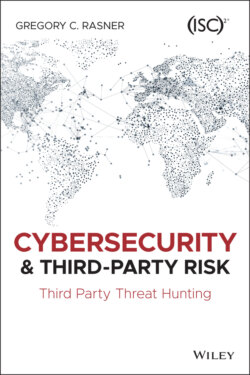Читать книгу Cybersecurity and Third-Party Risk - Gregory C. Rasner - Страница 34
Inside Look: Home Depot Breach
ОглавлениеOccurring in 2014, the attacker in the Home Depot breach used a third‐party's logon credentials to get into that vendor's environment. Once inside the vendor's network, they leveraged a zero‐day exploit for Windows that gained them access to Home Depot's corporate environment. Within the Home Depot network, they deployed memory‐scraping malware to the company's POS systems, resulting in over 50 million credit and debit cards numbers being stolen along with a similar number of email addresses. Valid customer email addresses are a gold mine for phishing attacks. Several studies were done on how Home Depot could have installed IDS/IPS, end‐to‐end encryption, network segmentation, and other technical and process improvements to detect the vulnerabilities exploited by the attackers. Very little is ever mentioned about how a more robust cybersecurity due diligence program would be appropriate for vendors.
This third‐party vendor had a connection to Home Depot. While we have focused most of the discussion on data security, there are vendors who will need to connect to your network to perform their business function. These types of vendors pose risks like the Home Depot incident demonstrates: Their inadequate security controls were the beachhead the hacker needed. Legitimate cases can be made that if Home Depot had better security patterns in its enterprise, the attack might have been either prevented or caught much earlier (they lingered for months). However, if Home Depot had taken our more Cybersecurity Third‐Party Risk approach, the risk of the beachhead being established would have been reduced.
In this updated approach, we want to look at a few items:
Did Home Depot have language in its contract with this vendor? Did it have:Appropriate cybersecurity language in the contract with the vendor who had a direct connection to the Home Depot network?Provisions in the contract language allowing Home Depot to perform validation or gain assurance of the vendor security controls?
A few high‐level questions should have been more diligently reviewed:The hardware most vendors maintain at a customer's sites for end‐to‐end connectivity often falls into a no‐man's‐land of who maintains it. If the third party owns it, make sure they do so securely. Did they verify it on a regular basis that is pre‐established with the vendor to set expectations?What was their access management policy and how did they enforce it in production? If they had a policy, how did it not catch this activity? Was logging and monitoring insufficient?What was the vendor's patch management policy and were they aware of the zero‐day exploit available in the version of Windows?
Notice many of these questions are incident management–type questions a cybersecurity incident management team (CIMT) would typically ask internally. In this case, it is a third‐party risk team asking similar questions of vendors, leveraging language that is written into contracts, and managing their security as an extension of your own.
